Encore Performance: The Gary Cooper House
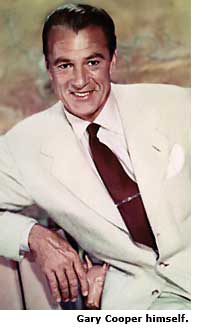
When renowned Hollywood actor Gary Cooper built his 'dream house' in the early 1950s—an ultra-modern, angular concoction featuring stone, glass, and steel—movie fans smiled and said they knew why.
Cooper had recently portrayed Howard Roark, the egocentric architect at the center of 'The Fountainhead,' a man so passionate about architecture that he made Frank Lloyd Wright—upon whom the character was clumsily based—look like a hobbyist.
Roark, a rugged individualist who was guided only by his own vision and considered other architects sell-outs, proclaimed, "I don't work with collectives, I don't consult, I don't cooperate, I don't collaborate." Ayn Rand, the selfishness-is-a-virtue social philosopher who wrote the original novel and the screenplay, called 'The Fountainhead' "a defense of egoism."
To prove his point, in the film's climax, when lesser, weaker men make changes to Roark's masterpiece-in-the-making, a skyscraper, Roark blows it up.
Cooper, the columnists surmised, saw himself as Howard Roark reborn. "The popular interpretation," architectural writer Thomas Hess noted recently, "was that the building was Cooper's actualization of his Howard Roark persona."
The popular interpretation, not surprisingly, was wrong, says Maria Cooper Janis, a painter and documentary filmmaker who lives in New York City. Maria moved into the house as a teenager in 1955 with her parents, Gary and Veronica 'Rocky' Cooper. The house is in Holmby Hills, a neighborhood above Sunset Boulevard that's less known to the general public than the adjacent Beverly Hills—but more upscale, according to the house's current owner, David Bohnett.
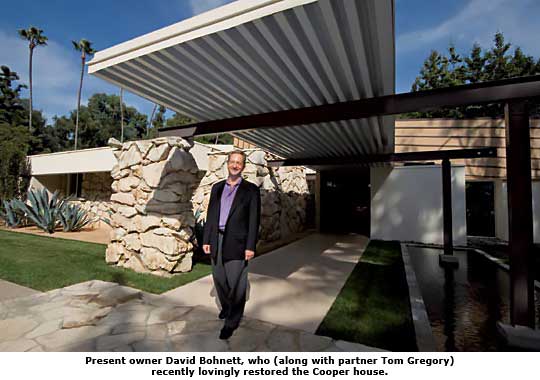
Her parents, Janis says, had loved modern design for years, and had already built two innovative houses before hiring A. Quincy Jones (1913-1979), of the firm Jones & Emmons, for what would be the Cooper family's final house, where they lived until Gary died of cancer in 1961. "They always liked new, leading-edge things, and always in exquisite taste," Janis says.
"They both knew very much the kind of lifestyle they enjoyed living and they wanted a house to reflect that," she says. "My parents, they loved to break new, unusual ground."
The Cooper house, much as its first owner did, has star power. It's a powerful work by one of California's leading modernist architects, who's known for the thousands of homes he designed for developer Joe Eichler, as well as for custom homes, commercial work, and his work—cooperating and collaborating with several other architects—on the Mutual Housing Association's cooperative housing development in Brentwood.
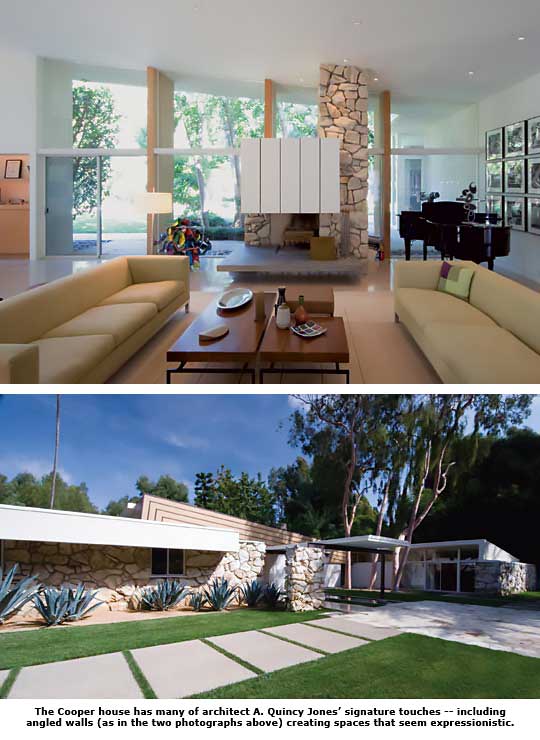
Jones' work, especially his early work, is also very Wrightian in its look, while always possessing its own style. "It was so advanced in outline," Cooper once said of the house, "that we sometimes wonder if we're in the year 2000."
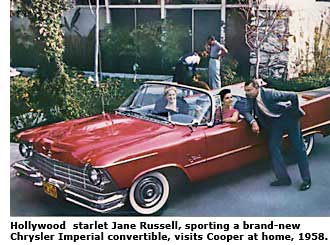
And unlike many mid-century modern homes built in wealthy neighborhoods, which are often demolished by homeowners with Howard Roarkian egos, the Cooper house returned for its second act. Bohnett and his partner, Tom Gregory, have lovingly restored the house and made it a notable part of the Los Angeles charitable events scene.
Bohnett says he was attracted not by its connection to Gary Cooper, but by the architecture itself. "I just thought it was the most beautiful house I had ever seen," he says.
The 6,000-square-foot house has many of Jones' signature touches—angled walls creating spaces that seem expressionistic; a single-sloped roof rising to a wall of windows; mitered-glass corners; hovering roofs over low, ranch-like wings. But there is also much of the Coopers in it, Janis says.
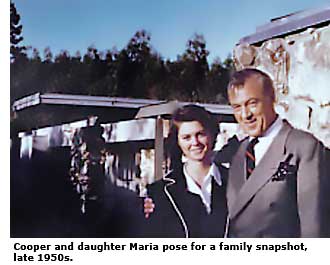
"The stone in the front was very much my mother and father's idea," she says. "Being from the West, my father loved the sense of nature and the ruggedness of nature."
The Coopers also wanted a stone fireplace and a water feature. Jones gave them a small pool, complete with miniature waterfall, that is half inside the house and half out, flowing beneath a glass wall. The pool was filled with smooth river pebbles, Janis recalls.




